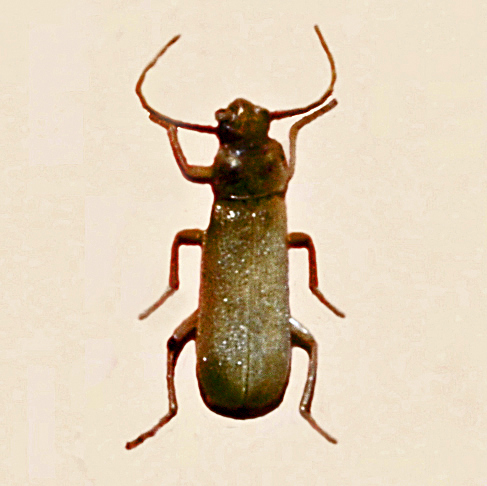
Soldier beetles belong to the Cantharidae family of insects with about four hundred seventy species in North America. They are also known as leatherwings because of their tough wing covers that are usually black, brown or gray. Some species are brightly colored and resemble military uniforms, giving rise to their common name. Adult soldier beetles have soft elongated black bodies .5 to .75 inches long with a yellow to red head bearing thread-like antennae. Some species resemble their close relative, the lightening bug, but lack luminescence. The worm-like larvae are black, dark brown, or gray, up to .75” long , and covered with bristles that give a velvety appearance. Both adults and larvae secrete a foul tasting chemical to protect themselves from predators. Mouthparts are adapted for chewing.
Adult soldier beetles feed on nectar and are important pollinators of the flowers they visit. Some may be predaceous on soft bodied insects, caterpillars, and aphids. The larva feed on aphids, mealy bugs, and the eggs and larvae of other beetles, grasshoppers, moths , and other insects. Some larvae may feed on garden plants such as celery and potato but over all soldier beetles are considered beneficial.
Soldier beetles undergo complete metamorphosis. In summer, adult females lay their eggs in moist areas such as loose soil and leaf litter. The nocturnal larvae that emerge feed at soil level until they pupate in chambers of the soil in fall. Adults emerge in the late spring and continue the cycle.
To attract and maintain a population of soldier beetles it is important to provide cover and food for adults and larvae. Garden plants that provide pollen and nectar for adults include asters, goldenrod, marigold, zinnia, coneflower, globe thistle, sunflowers, boltonia, and coreopsis. Oregano, tansy, and chamomile are good choices for the herb garden. The larvae need moist areas with loose soil and plant debris both as cover and place to feed. This can be provided by mulching trees and shrubs that provide shade to create a moist habitat. The use of broad spectrum insecticides should be avoided.